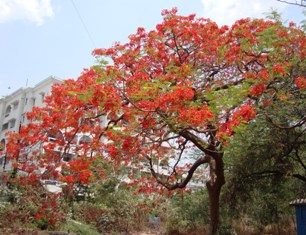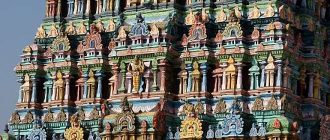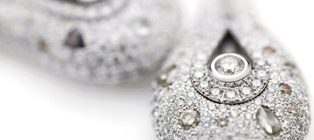Want to learn more about Indian trees red flower? Read on to witness the beauty of the charming India tree red flowers…
One of the most popular and well-known red flowers on Indian trees are the Peacock flower trees. It is similar to another plant called the Gul Mohar and often one is confused for the other.
The botanical name of this flowering tree is Caesalpinia Pulcherrima. The first word is taken from the name of the 16th century botanist who discovered this plant and the second word means most beautiful. Since this tree is popular and well-known across the Indian landscape it has different names in each of the dialects commonly spoken across India.
You may hear names like Krishna Chura, Kunish Churin, Radha Chura or Komri in the native dialects and Barbados Pride is the name as pronounced in English. It is interesting to note that this shrub grows in a different way compared to other trees and flowers.
This is mainly because the flowers on this tree are smaller in size as compared to other shrubs and are grouped in a very unique way. The actual record of the country of origin of this plant is unknown however it was prevalent in India during the 16th century. It is now commonly seen across all subtropical and tropical ecosystems in the world.
Description of the India Trees Red Flower
The Peacock flower tree can grow up to 25 m in height and has very low hanging branches which form a large and spreading bush. The foliage on this tree is very bright green and feathery and always covered with broad strands of blossoms almost through the entire year.
The bark is pale and downy in color and has black spots and sharp prickles which protrude from a circular opening. It is interesting to note that the younger trees and their young branches are smooth and light green with heavy leaves and long stems. Each strand has 12 to 18 pinnas and interestingly enough each pinnas has around 20 to 40 small oblong leaflets.
Flowers arrive at the end of the branches in the form of sprays which are then divided into smaller groups in more sprays. The buds are shaped like eggs and they are held in long and slender stems along with the open flowers.
The red variety of this flower has bright orange red color at the edge and deep yellow color in the center when it blooms. As the flower ages it turns deep red and has five oval shaped petals.
All these petals have wrinkled edges but only one of them is slightly smaller in size when compared to the others. There is a fine spread between the five long lobes spread out and are visible between the petals. The calyx is red and orange colored giving it a very vibrant center.
The stamens are very long and 10 in number creating a whiskery appearance at the mouth of the flowers. These are interestingly red in color when found on the red flowers and yellow on the yellow flowers. These curled and twisted flowers open into a wrinkled and curly mass when they bloom.
Each part of the tree is used to serve some medical purpose like leaves being used as a purgative and the flower is used to heal wounds through fomentation. The roots which are considered poisonous are used as a tonic in small quantities. It is essential to prune the red flowering tree regularly once it blooms starting at the age of eight months to keep it looking neat.





